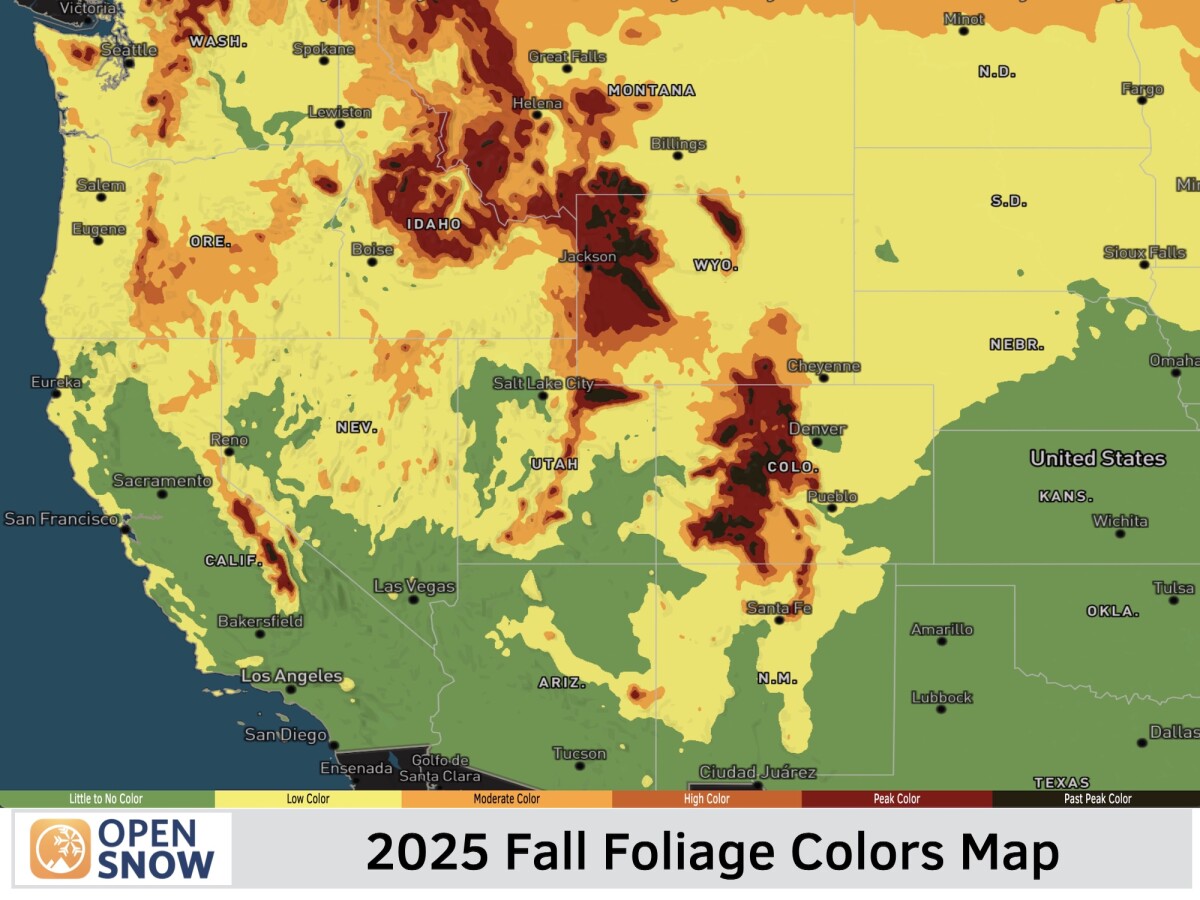Western US Daily Snow

By Alan Smith, Meteorologist Posted 1 year ago July 22, 2024
Smoky Conditions for Many Areas, Thunderstorm Uptick in the Sierra
Summary
Wildfire activity increased across the Northwest over the weekend, and smoky skies are present throughout the Interior Northwest and much of the Northern & Central Rockies. Smoke from Northern Canada is factoring in as well. Monsoonal moisture will increase across the Sierra early this week, resulting in t-storms with locally heavy downpours, with moisture expanding east later this week.
Short Term Forecast
Big Picture Weather Pattern:
Monsoonal moisture is shifting southward and westward early this week, rotating clockwise around a high pressure center located over the Southern Great Basin. A significant uptick in moisture will occur over the Sierra Nevada Range in California, resulting in an increase in thunderstorm activity, with some storms producing locally heavy rain.
A little bit of this moisture will reach the Interior Northwest, resulting in scattered dry thunderstorms, which is not especially helpful to the ongoing wildfire situation in this region.

5-Day Temperature Outlook:
A trough of low pressure will move into the Pacific Northwest this week and will gradually progress eastward with time. Cooler air will arrive with this feature, reaching the PNW Coast early in the week before eventually bringing heat relief to the Inland Northwest and Rockies by late in the week (following a hot start early in the week).

Fire and Smoke Outlook:
Wildfire activity expanded across the Interior Northwest over the weekend, fueled by hot and dry conditions along with occasional dry thunderstorms, which produce gusty outflow winds that can further exacerbate ongoing fires.
Air quality has been impacted throughout the Interior Northwest and Northern Rockies, and smoke from Northern Canada wildfires has also moved southward into the Rockies and adjacent plains, resulting in smoke as far south as Denver and Colorado Springs.
Air Quality Ratings on Monday AM:

Smoke will continue to be a factor across a large portion of the West throughout the week, with areas along the West Coast and across the Southwest avoiding the worst of it. California smoke will also be more localized compared to areas further north.
Monday:
In the map below, the red flames denote active wildfires that are producing moderate to significant smoke, and the black arrows denote the prevailing winds aloft which provide a good idea of smoke transport. Across the Northwest, winds will generally be blowing from southwest to northeast, while the Central/Eastern Rockies will see winds blowing from north to south, pulling in smoke from Northern Canada wildfires.

Smoke (Sky) Projection for Monday afternoon:

Tuesday:
Not much change is expected on a large scale in terms of wind direction compared to Monday. However, the Central/Western Cascades in Washington should see a decrease in smoke due to increasing westerly wind speeds from the Pacific.

Smoke (Sky) Projection for Tuesday afternoon:

Wednesday:
Only some subtle changes in winds are expected as the trough of low pressure over the PNW moves eastward very gradually. The main change is that the Central Rockies will see a transition to westerly winds, while the east side of the Rockies will continue to see northerly winds with Canadian wildfire smoke remaining a factor.

By the end of the week, the Eastern Rockies should eventually see a change to a more westerly flow with improving air quality and visibility in Colorado (barring any new fires upwind). However, the Interior Northwest and Northern Rockies will see varying levels of smoke for the foreseeable future.
Rain and Thunderstorm Forecast for Mon (Jul 22) to Tue (Jul 23):
The Sierra Nevada Range will be favored for thunderstorms on Monday, while most areas of the Southwest and the Rockies will see more isolated activity. One exception is New Mexico where more numerous thunderstorms and locally heavy rain can be expected.

Sierra Nevada Range:
The High Sierra will be most favored thunderstorm activity from Sequoia/Kings Canyon to Yosemite. Storms will be capable of producing locally heavy rain, especially on Tuesday. Scattered thunderstorms are also expected around Tahoe.

Here is our hourly precipitation and lightning forecast for Mt. Whitney on Tuesday. Thunderstorm chances will increase significantly by early afternoon.

New Mexico:
The eastern and northern ranges of New Mexico will also see an active thunderstorm pattern early this week with locally heavy rain and burn scar flooding possible, while western parts of the state will see more isolated activity.

Forecast for Wed (Jul 24) to Thu (Jul 25):
Monsoonal moisture will expand northward during this period with an uptick in thunderstorms expected across Arizona, Utah, Nevada, and into the Northern Rockies. Heavy downpours will be possible with thunderstorms.
The Sierra will see more thunderstorms as moisture remains in place, while New Mexico and Colorado will also hang onto scattered thunderstorm chances, favoring the Sangres and San Juans.

Forecast for Fri (Jul 26) to Sat (Jul 27):
Moisture will expand eastward during this period with an uptick in thunderstorms expected across the Central Rockies, including New Mexico, Colorado, and Wyoming. Heavy rain will be possible with storms in this pattern. A drying trend is expected further west across the Sierra.

Extended Forecast
Outlook for Sun (Jul 28) to Thu (Aug 1):
The trough of low pressure located over the PNW in prior days will eventually move across the Rockies around the beginning of this period. This trough will significantly weaken the monsoon with much drier air arriving in its wake.
Enough moisture will linger across the Four Corners region for near-daily rounds of isolated to widely scattered thunderstorms, but coverage and rainfall amounts will be lower than usual for this time of year.
Additional low pressure troughs near the West Coast will lead to cooler temperatures, and the Olympics and Cascades in Washington could even see periods of showers. Temperatures will rebound to above-average values across the Rockies as high pressure rebuilds.

Thanks so much for reading! Next update on Wednesday (July 24).
Alan Smith
About Our Forecaster




